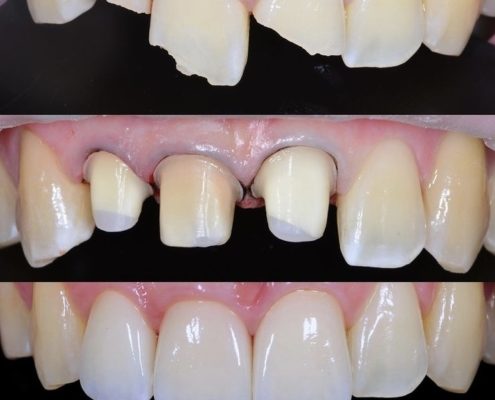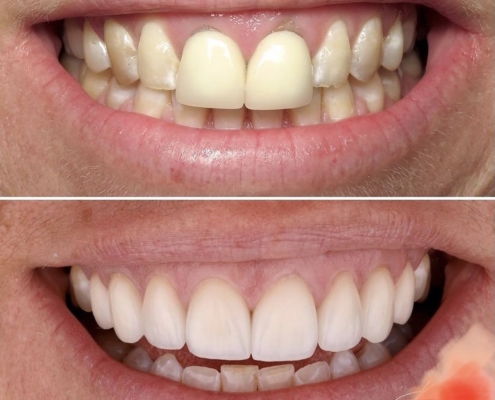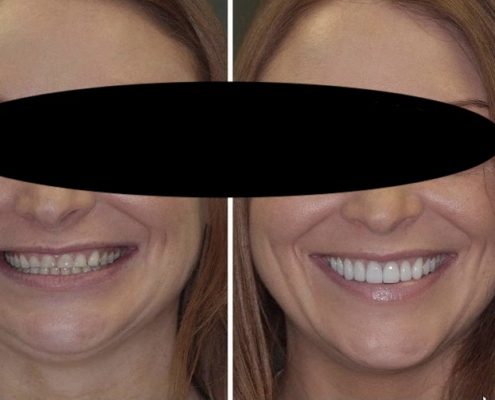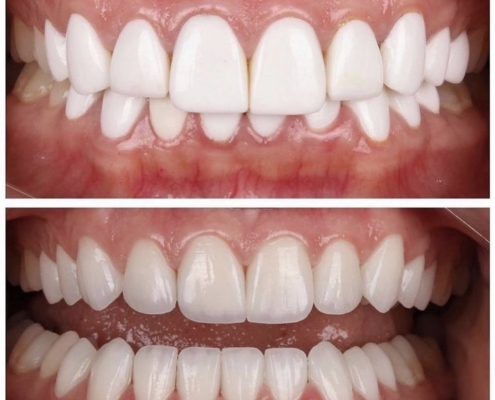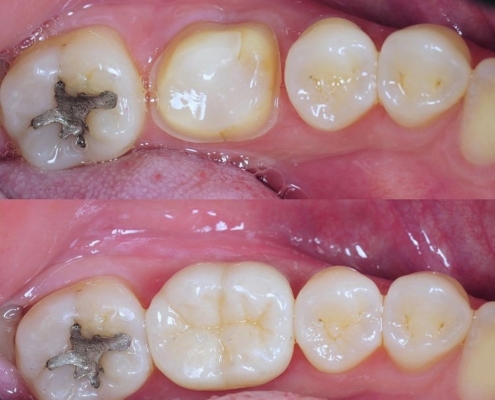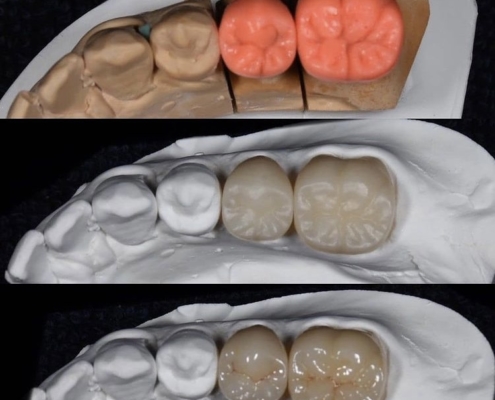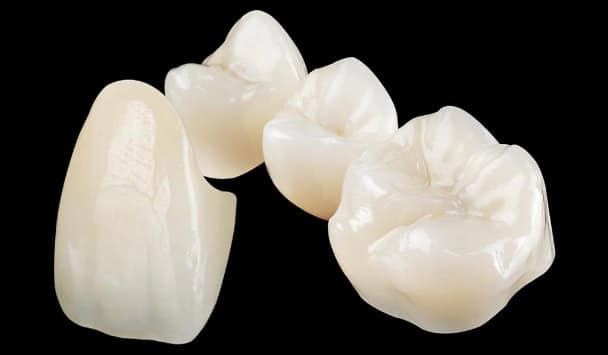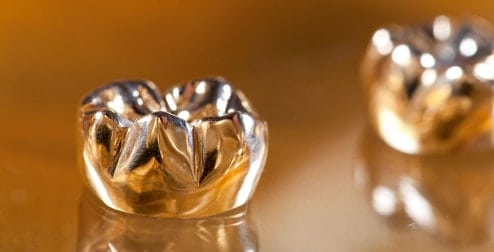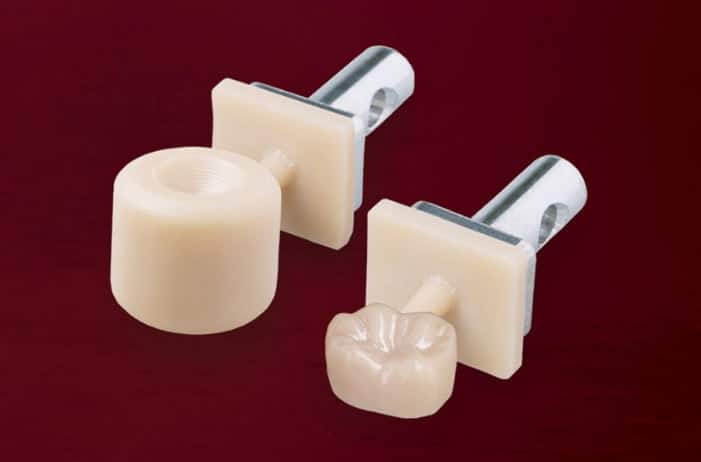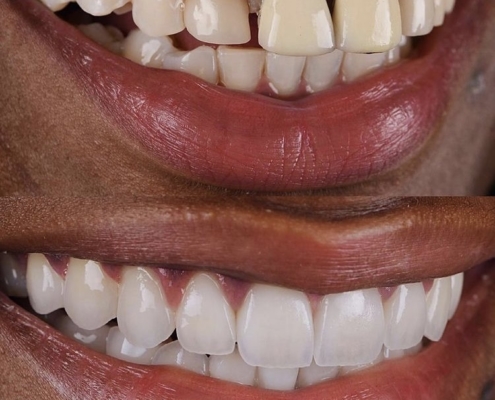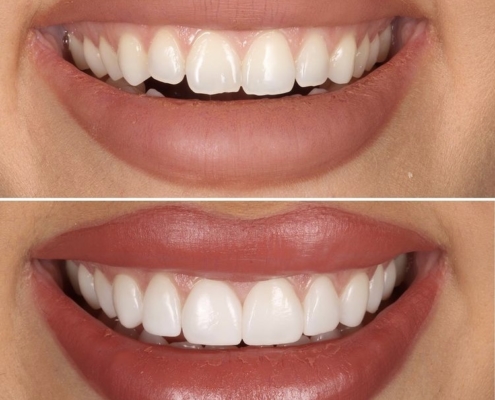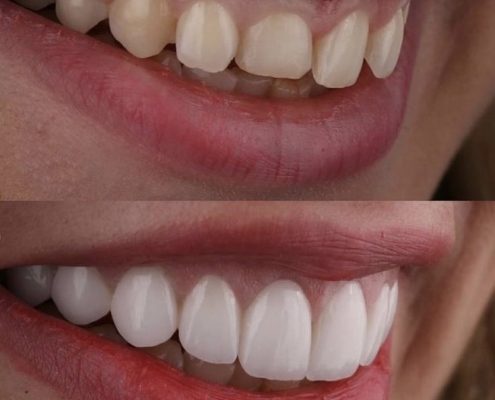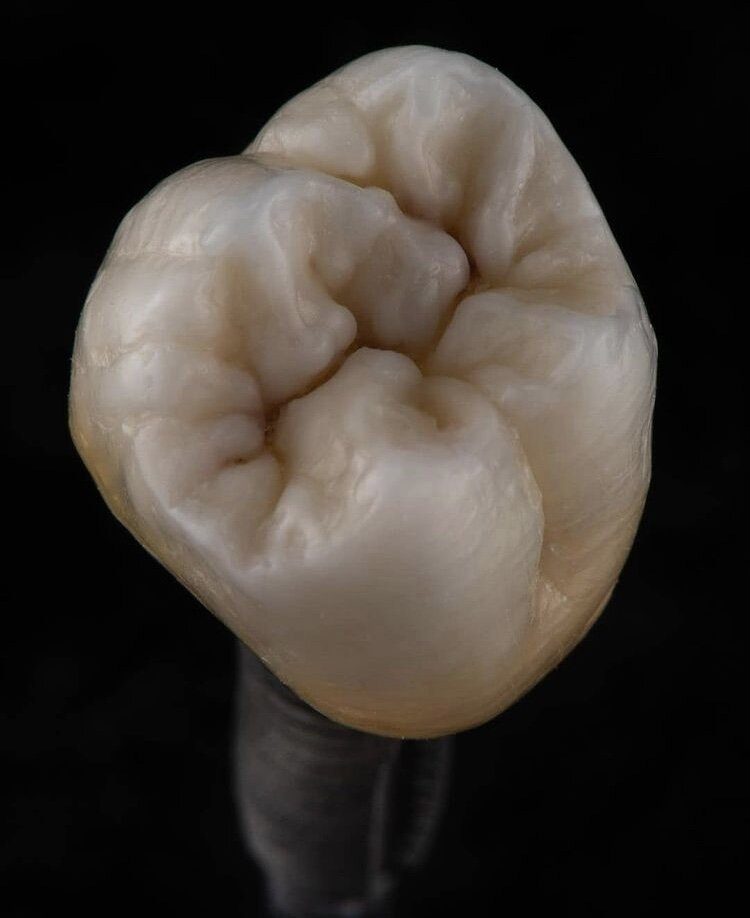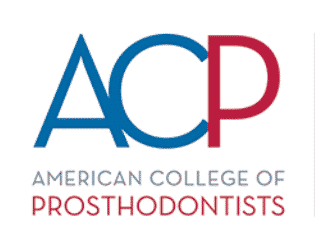Dental Crowns Bridges Richmond VA
What is a dental crown?
A dental crown is a tooth-shaped “cap”. It is placed over and affixed to a prepared tooth. It covers the tooth to restore its shape, size, strength, and improve its appearance.
Once placed, the crown fully covers the entire visible part of a tooth that lies at and above the gum line.
When is it appropriate to use a dental crown?
You may ask yourself “How do I know if I need a dental crown?” Common reasons include:
- Preservation of tooth structure. – for example to preserve structure if small fracture lines are visible)
- Improved tooth function or replacement
- Cosmetic reasons
- After a root canal treatment
These situations are described below.
Crowns are used for tooth preservation
A dental crown may be needed in the following situations:
- To protect a tooth with large fillings or a root canal
- To protect the tooth from further cracking
- To restore severely worn teeth
A crown may also be used as a support or complete tooth replacement mechanism
- To hold a dental bridge in place
- To cover an implant
Crowns are commonly used for cosmetic or functional improvements
- To cover misshaped or severely discolored teeth
- To enhance cosmetic appearance, improve chewing function and even speech
Commonly used types of dental crowns in Virginia
For most people, the best crown is one that cannot be distinguished from a natural tooth.
There are essentially four or five types of crowns commonly offered in most practices.
These include ceramic crowns, porcelain, porcelain fused to high noble metal, Zirconia, stainless steel, and gold. Also, temporary resin crowns are placed while a permanent crown is prepared in the laboratory.
All ceramic crowns or all porcelain crowns
Porcelain fused to metal (PFM) crown; note that the metal lip is only visible
on the lingual (tongue side) of the crown.
Gold Crown for back teeth (very durable, recommended for patients who grind their teeth)
They have largely been replaced by more natural looking alternatives.
Milled crowns are made using an intraoral scanner and cut from
a Zirconia blank.
Zirconia or milled crowns are constructed from a digital image of the underlying and opposing teeth. They can be produced either in a dental office or in a dental laboratory. Milled crowns are convenient as they only require one visit with no need for a temporary crown or an impression.
Which type of dental crown is best? Ceramic, porcelain fused to metal (PFM), Zirconia, or a gold crown? This depends on a case-by-case basis. It involves a joint decision between you and your dentist.
Ceramic, porcelain crowns
All-ceramic or porcelain crowns are excellent at matching the color of natural teeth. They work well for the front teeth as they appear translucent and natural. If the gum recedes over time these crowns will still appear natural at the gum line. They are less durable than PFM crowns as PFM crowns have the underlying structure of the high noble metal. This crown remains intact should at one point the ceramic component of the crown fracture. Porcelain and ceramic crowns are harder than the opposing natural teeth. To prevent unnecessary wear and enable a proper bite, the crown should be cut to precisely fit the contour of the opposing tooth.
Dental PFM crowns
PFM crowns yield a natural appearance and typically last longer than pure porcelain or ceramic crowns. The metal alloy component provides strength and a precision fit to the underlying tooth substrate. Under the high temperature in a ceramic oven, the porcelain or ceramic will be baked onto the metal. PFM crowns have a higher cost for time and materials, yet generally, last longer than their porcelain or ceramic counterparts.
Gold alloy dental crowns
Gold alloy crowns are typically used in less visible parts of the mouth such as the bicuspids or molars. Unlike conventional ceramic or porcelain crowns less tooth substance needs to be excavated to prepare a substrate for a PFM or gold crown. Gold crowns can last more than 50 years and are often prescribed for individuals who grind their teeth (bruxism). The gold crown will wear down the opposing teeth less than a ceramic or porcelain one.
Temporary Crowns
All-resin dental crowns are less expensive than other crown types. However, they are a crafted from a softer material and wear down faster over time. This makes them more prone to fractures than porcelain-fused to high noble-metal-crowns. These crowns are mostly used as a temporary solution before the more permanent restoration is utilized.
Stainless steel crowns are prefabricated crowns that are used on permanent teeth primarily as a temporary measure. The crown protects the tooth or filling while a permanent crown is made from another material.
For children, a stainless steel crown is commonly used to fit over a primary tooth, which has been prepared to accept it. The crown covers the entire tooth and protects it from further decay or fracture. When the primary tooth falls out to make room for the permanent tooth, the crown comes with it. In general, stainless steel crowns are used for children’s teeth because they don’t require multiple dental visits to put in place and are more cost-effective.
What is the process of making a dental crown?
Crowns and bridges – How we make them and why it matters to you
We take great care in taking impressions, the selection of crown materials, the the dental laboratories we use and in the final placement and function of the crowns or bridge.
Full Arch Impressions – quality begins here
We always take full-arch impressions. The impression determines the crown-to-tooth fit and the contact to the opposing teeth. A precise fit is essential for strength, comfort, and longevity. It also blocks microbial ingress, where the crown bonds to the tooth. Thus, there is little if any need to adjust the crown at the time of fitting. This assures the optimal placement, strength, adhesion, and seal.
Dental bio-materials – some are better than others
Advanced Dentistry of Richmond uses mostly porcelain fused to high noble metal crowns.
High noble metals, such as platinum/gold alloys are non-allergenic to gums and best protect the tooth from bacteria. Over many years the porcelain portion of the crown may fracture or chip. The tooth remains protected by the underlying gold alloy layer.
Why is a dental lab important to you?
We work only with a select group of scrutinizing dental laboratories. They require exact impressions from the patient’s mouth. They do not accept any “guess-work”. Skilled technicians fabricate crowns with the best fit and natural look. This includes custom staining and shaping for optimal esthetic results.
What can you expect when you visit our dental office for a crown?
During your first visit, we inspect the tooth and assess the level of decay or need for reconstruction. We will take X-rays to determine the condition of the root and the spread of non-visible decay.
Next, we decide on the best treatment. Considerations include a multi-sided filling, a crown, an inlay, a bridge, or an implant. This depends on the severity of the decay, tooth position, bite, and other factors.
What is the process for crown preparation?
When we select a tooth for a crown preparation, we will trim the tooth surface with a diamond coated drill bit. This preserves as much of the tooth as possible. We will try preserve as much of the natural tooth structure as possible. The preparation will be finalized with a very fine diamond drill. We use a lot of water to cool the tooth during the tooth preparation process, to prevent damaging the underlying tooth nerve.
What is the process, if a lot of tooth structure is missing?
We might have to build up missing tooth structure with a core build-up, which hardens and improves the fit and adhesion of the new crown.
What happens after tooth preparation?
Oncewe finish preparing the tooth, we take impressions for both the upper and lower arches. These not only capture the contours of the prepared tooth but also that of the opposing tooth to assure a good bite.
Finally, we fit and cement a temporary crown on the tooth. After about two weeks, once the dental laboratory has finished preparing the crown, we will schedule an appointment to fit and cement the permanent crown.
Do you only use high-quality dental laboratories?
High quality dental laboratories have better trained dental technicians who receive specific instructions on materials to be used and how to shade and shape the new crown. The few dental laboratories we use are thorough and precise. Their crowns have an excellent fit. This saves considerable time for placement. It also provides an excellent seal which allows the dental cement to perfectly adhere to the underlying tooth.
What happens on the second visit?
On your second visit, we fit the crown. We check your bite and the contact surfaces to the opposing teeth.
You will have a chance to inspect the new crown. You will have an opportunity to discern how natural it looks and how the color and texture matches the surrounding teeth.
Finally, we cement the new crown to the prepared tooth with a long-lasting dental cement.
How many visits in the dental office does it take to get a new crown?
A simple porcelain fused to high-noble metal crown placement involves two visits. The interval between visits is about 14 days.
A well-placed crown can provide years of perfect function and satisfaction
Advanced Dentistry of Richmond is located in the Richmond, VA area off of 64 West, exit Glenside Drive South, West on Forest Ave, to Bayberry Court, 7204 Glen Forest Drive, Second Floor, Suite 203 Richmond, VA 23226.
Call us now at (804) 282-7260.

